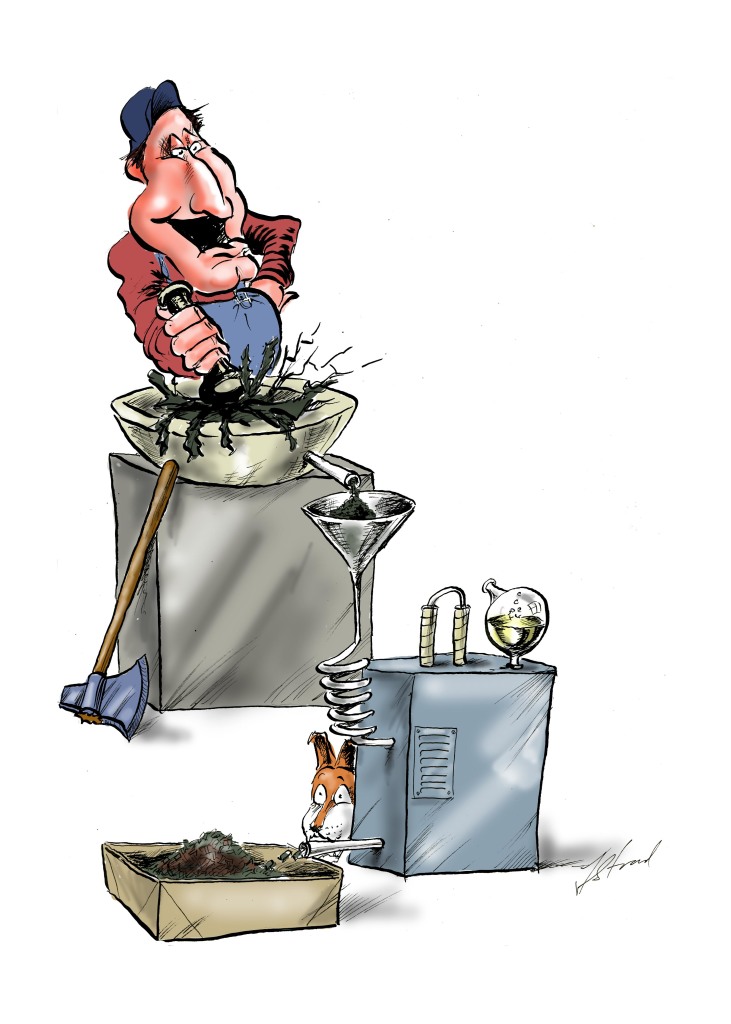In a similar process as roasting coffee beans, we can heat raw and unprocessed biomass. The result is a fuel with a number of advantageous properties. The process is called torrefaction.
In a future where fossil fuels are phased out, and biomass are the only available carbon source for energy purposes, it is crucial to utilize biomass in the best possible way. Torrefaction has the potential to be an important contribution to a 100 percent renewable energy future in Norway.
GROT is a collective term for branches and treetops, and is often left in the forest as waste. GROT is a very suitable candidate for torrefaction.
During torrefaction, biomass is heated to a temperature between 200 and 300 ° C for 30 to 60 minutes. This results in a dry product in which the fibrous structure of the biomass is broken down. It is still very different from charcoal and has a brown colour which becomes darker as the torrefaction temperature is increased.
We just ended the “STOP-project” that was started in 2010. The project was led by SINTEF Energy in cooperation with NTNU and with contributions from both international and national collaborating partners.
Stable conditions give a better combustion process
The aim of the project has been to achieve stable operating conditions for bioenergy plants that produce heat or heat and power. Stable operating conditions is an important goal since everything becomes easier and better when you have a continuous combustion process without disturbances along the way.

The disturbances is typically caused by poor fuel quality or quality differences on the fuel that is fed into the energy plant, resulting in increased emissions, reduced efficiency, operational disturbances, increased maintenance and higher cost.
Therefore we need a better fuel – and this is where torrefaction comes in.
Torrefaction saves millions of years
Torrefaction can be seen as the first step on the carbonization ladder, where production of high quality charcoal (biocarbon) is the final quality improvement step. Fossil coal has been through a similar process over millions of years, but contains significantly more ash, nitrogen and sulfur than for example forest-based biomass.

What are the advantages of torrefaction?
- Right after torrefaction, the energy content per unit volume decreases, but increases per unit mass. This means that the energy density will increase in comparison to the raw fuel, if the torrefied material is ground and compressed afterwards.
- Hydrophobic nature, meaning that the final product will have low moisture content and will not absorb significant amounts of water while stored. As a consequence of being water repellent, torrefied biomass will not deteriorate in quality through biological degradation, which is the case for virgin biomass.
- Enhanced grindability due to the loss of its fibrous structure and becoming brittle which results in much less energy consumption during milling.
- Better particle size distribution, smaller particles which reduce residence time requirements for complete conversion and more spherical particles which gives enhanced aerodynamic properties.
- High particle porosity which results in greater reactivity due to a larger surface area available for reaction during combustion and gasification.
You can find out more about the STOP-project in our handbook.









Comments
Thanks for your interest, energy from biomass is renewable energy indeed, and part of our future sustainable energy system.
Very interesting. if this is one form of renewable energy sources? Renewable energy is one of the long-term solution in the face of the energy crisis. development becomes very important. and this requires the participation of various parties. information of interest. This article provides a very useful insight. thanks.